The Furniture: Canadian Brutalism Comes to L.A. in Blade Runner 2049
 Monday, February 12, 2018 at 11:52PM
Monday, February 12, 2018 at 11:52PM Daniel Walber's weekly series on Production Design. Click on the images to see them in magnified detail.
While planning the look of Blade Runner 2049, director Denis Villeneuve asked production designer Dennis Gassner for something very specific: brutality. As Canadians, Villeneuve and Gassner know a whole lot about that, at least architecturally. Canada’s big cities are inflected by brutalist buildings, stark and intimidating structures that have made their mark on cinema. Enemy is a good example, along with a lot of David Cronenberg’s early work.
Of course, Blade Runner 2049 takes place mostly in Los Angeles and was shot in Hungary. But its use of brutalist design transcends the specificity of place, resembling a vaguely Canadian nightmare as much as any waking version of California...
Its sets are imposing, glaring down on K (Ryan Gosling) with impassive malevolence. The Oscar-nominated work of Gassner and set decorator Alessandra Querzola is intensely physical, a rebuttal of sorts to the CG panoramas of recent big-budget science fiction.
This does not mean that there’s no animation or special effects in the movie. There’s plenty, from some of the action sequences to the flashy and ubiquitous advertising. The point, rather, is that the design of Blade Runner 2049 emphasizes the relationship between the digital aspirations of technology and the physical weight of its dystopian reality.
This is why the movie opens, not under the bright lights of downtown, but out on a farm in the middle of nowhere.
It feels like something out of the past, a solitary hideout with a low-lying house and the thoroughly unglamorous agriculture of edible larva. A lone, dead tree is held in place by rope. And if that’s not tangible enough, Sapper Morton (Dave Bautista) and K crash through a wall.
Intriguingly, this blunt tangibility continues into the headquarters of the Wallace Corporation. This towering monstrosity in the center of LA, its exterior recognizable from the original film, is the nerve center of this universe. It is here where the replicants are designed and created, where the line between human and machine is dictated by corporate will.
This desk, for example, is more desk than computer. There are no moving fields of light, no holographic informational displays. It even has a keyboard, arranged in the shape of the Wallace logo.
Every interior shares this color palette. Entire rooms are built out of wood, occasionally accented by the rippling shadows of unseen pools of water. A few rooms are brightened by skylights. Here, brutalist rigor is lit by an uncanny and deceptive warmth, an ersatz hearth or womb.
Even the strangest of Wallace’s technologies come in decidedly physical form. A particular highlight is the strange chip that Luv (Sylvia Hoeks) inserts behind the ear of her boss, Neander Wallace (Jared Leto). They look like disconnected keys from an old keyboard, kept in a smooth wooden box.
This, therefore, is an extremely tangible dystopia. The center of the city may be full of enormous holographic advertisements, but there is never any question that the reality of life is much more grounded and brutal. This is especially evident in the locations outside LA, desolate wastelands of urban death. San Diego has been reduced to brutalist fragments, the giant iron bones of now-extinct buildings.
Las Vegas is even more skeletal, in that its fallen objects are actually humanoid. K meanders through the corpses of artificial giants and their high heels.
All of these sets, which feel tangible even if they are occasionally enhanced by special effects, underline a key idea. Blade Runner 2049 is about a society in which tangible does not necessarily mean real. Replicants look like humans, they move like humans, and they fight as humans. Yet they’re told that something inside, some intangible lack, makes them fake.
Moreover, the revolutionary fact that threatens to overturn the system is not an abstract assertion of replicant humanity through emotional or artistic performance. Emotions can be denied, or dismissed as higher quality programming. Rather, the grand revelation is a proof of biology, the incontrovertible evidence of birth. This central, deeply physical metaphor is why Blade Runner 2049 could never be a fantasy of flashing lights and floating holograms. Its secrets and its conundrums are tangible, even brutal, and so is its world.
Previously: The Shape of Water



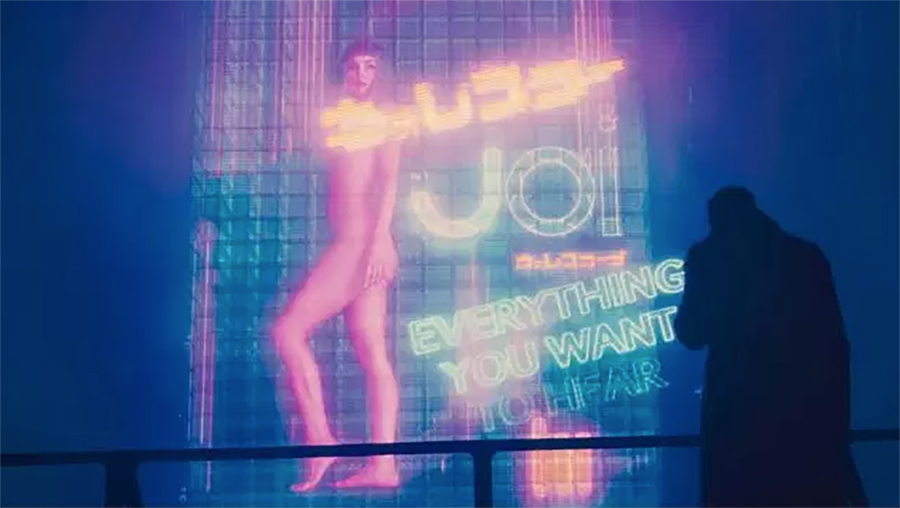
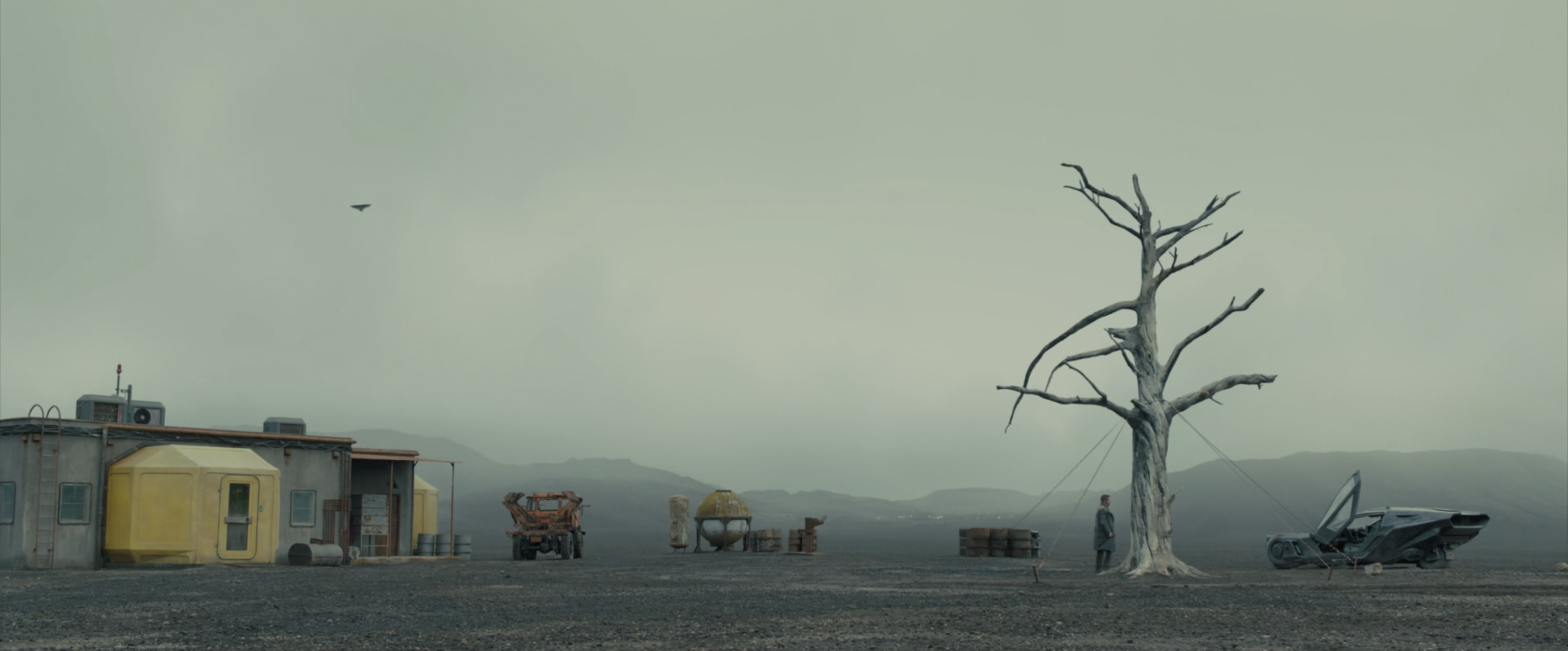

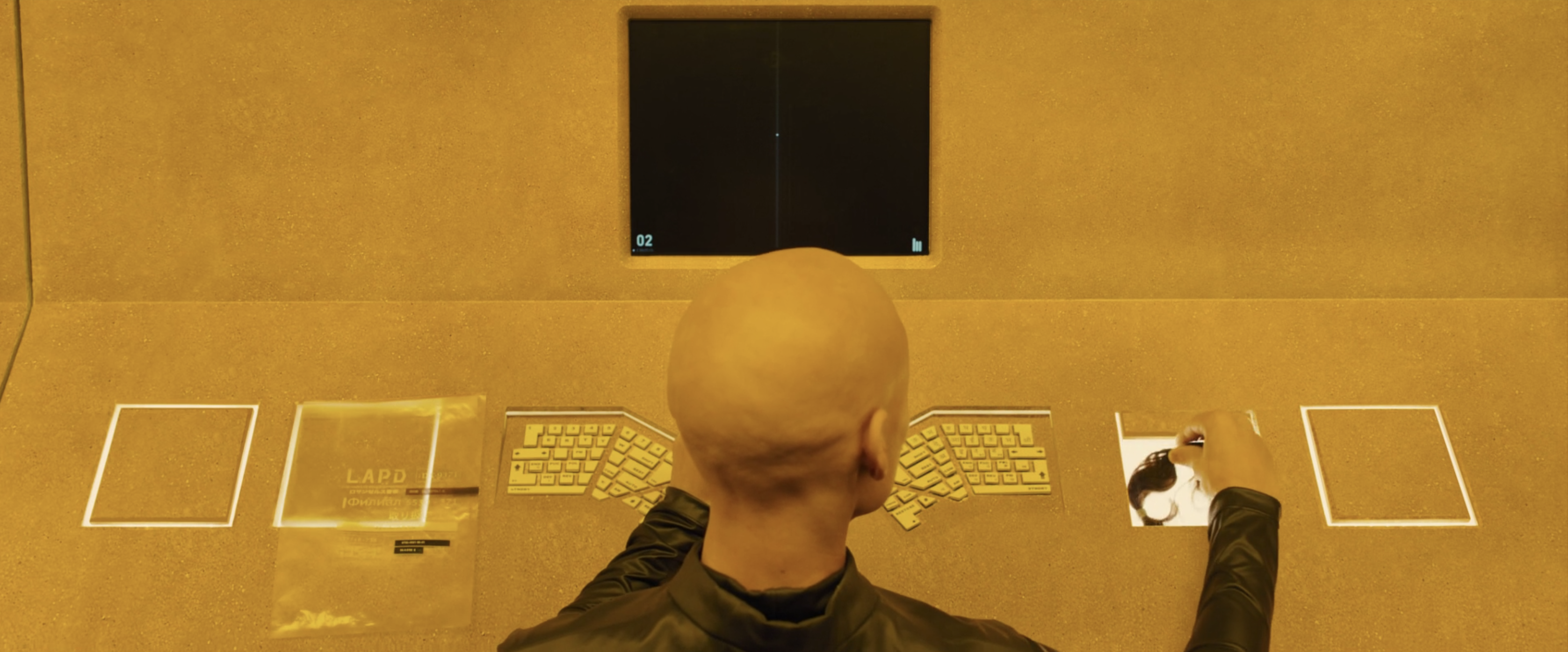
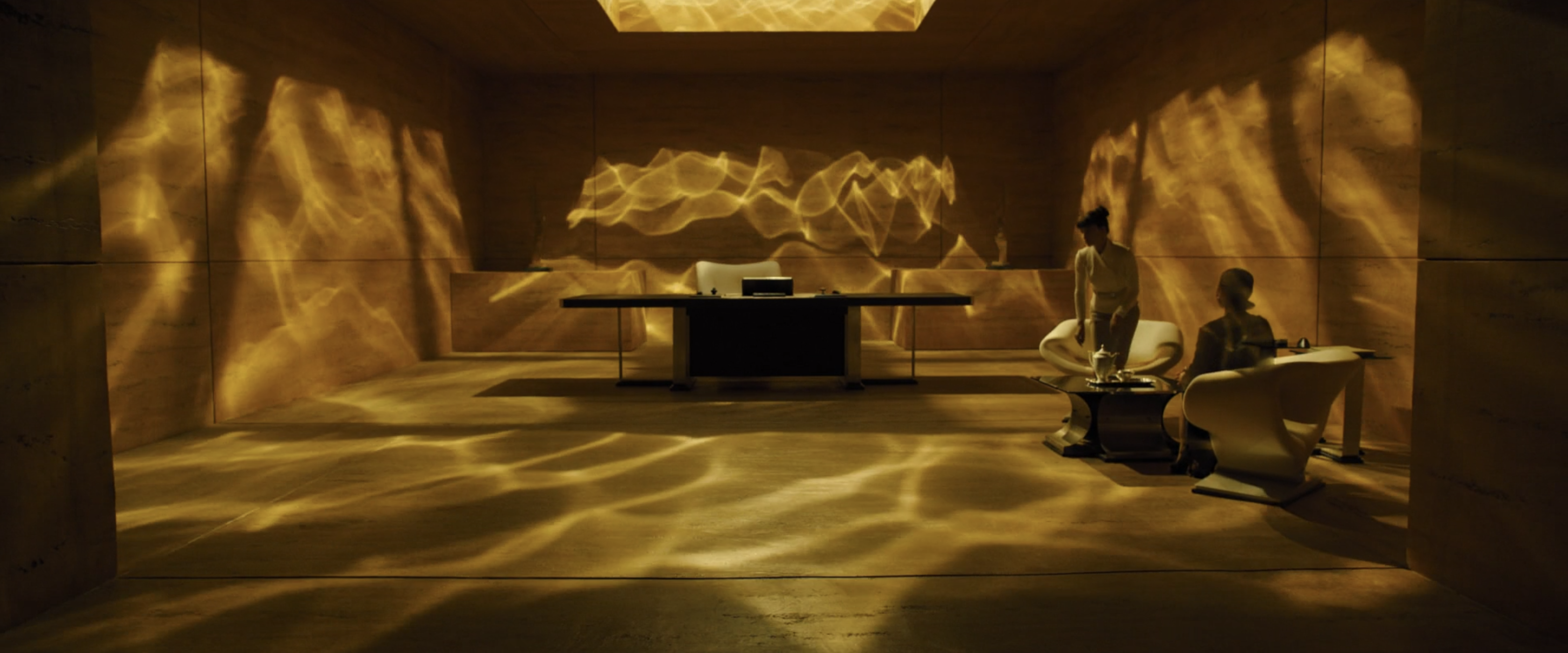
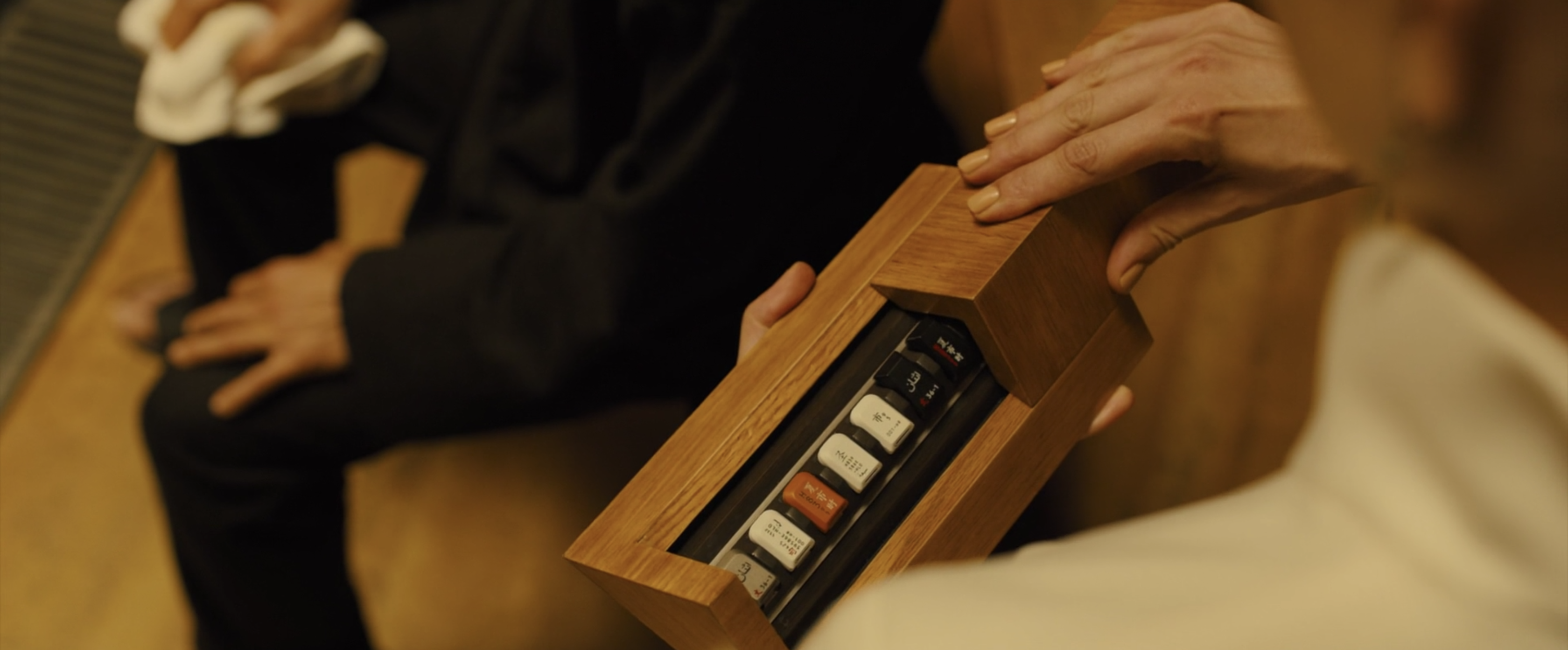
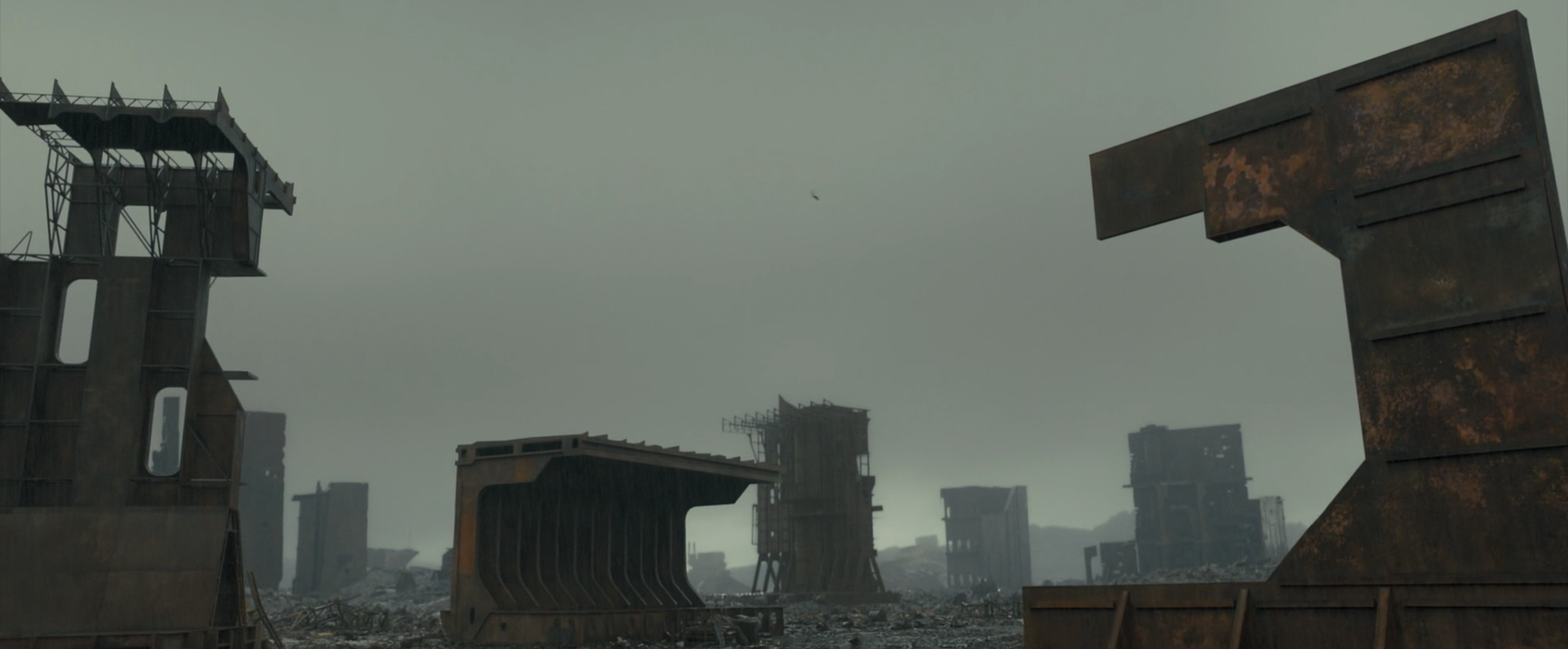
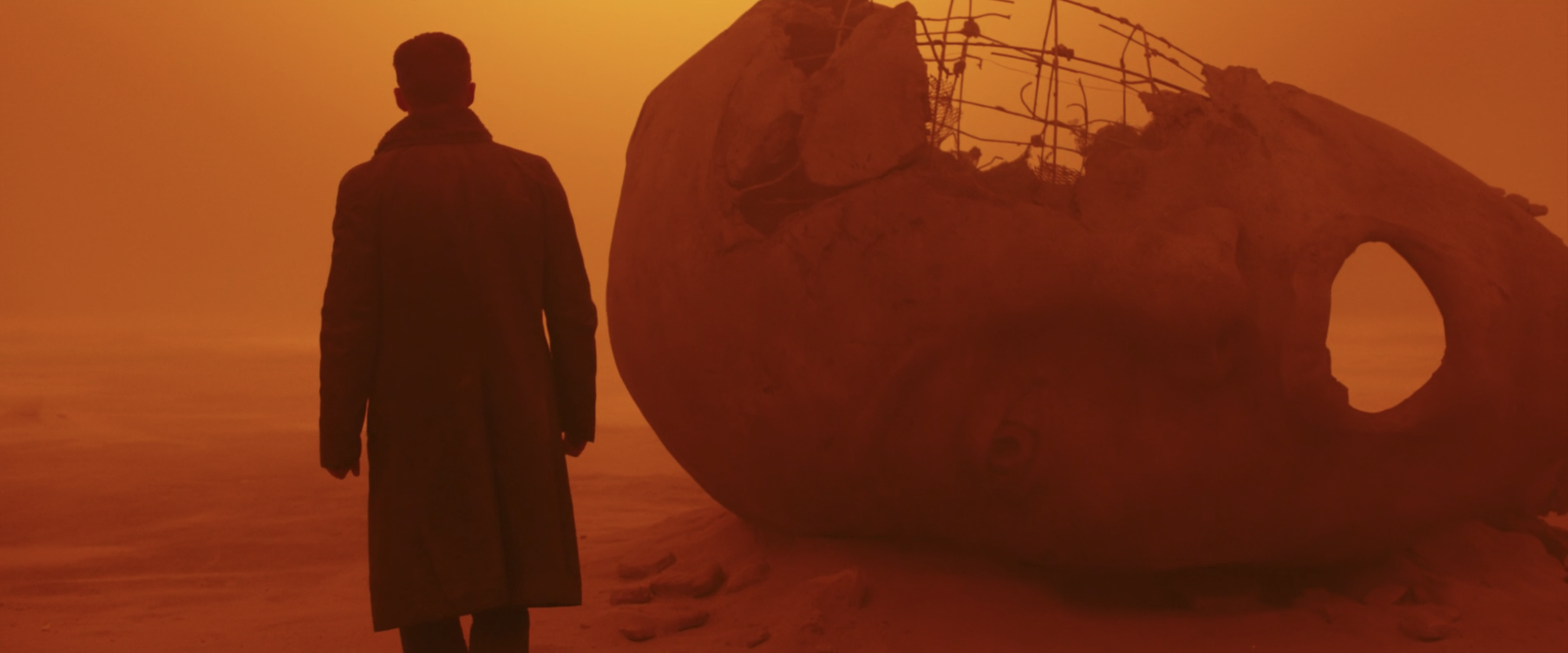
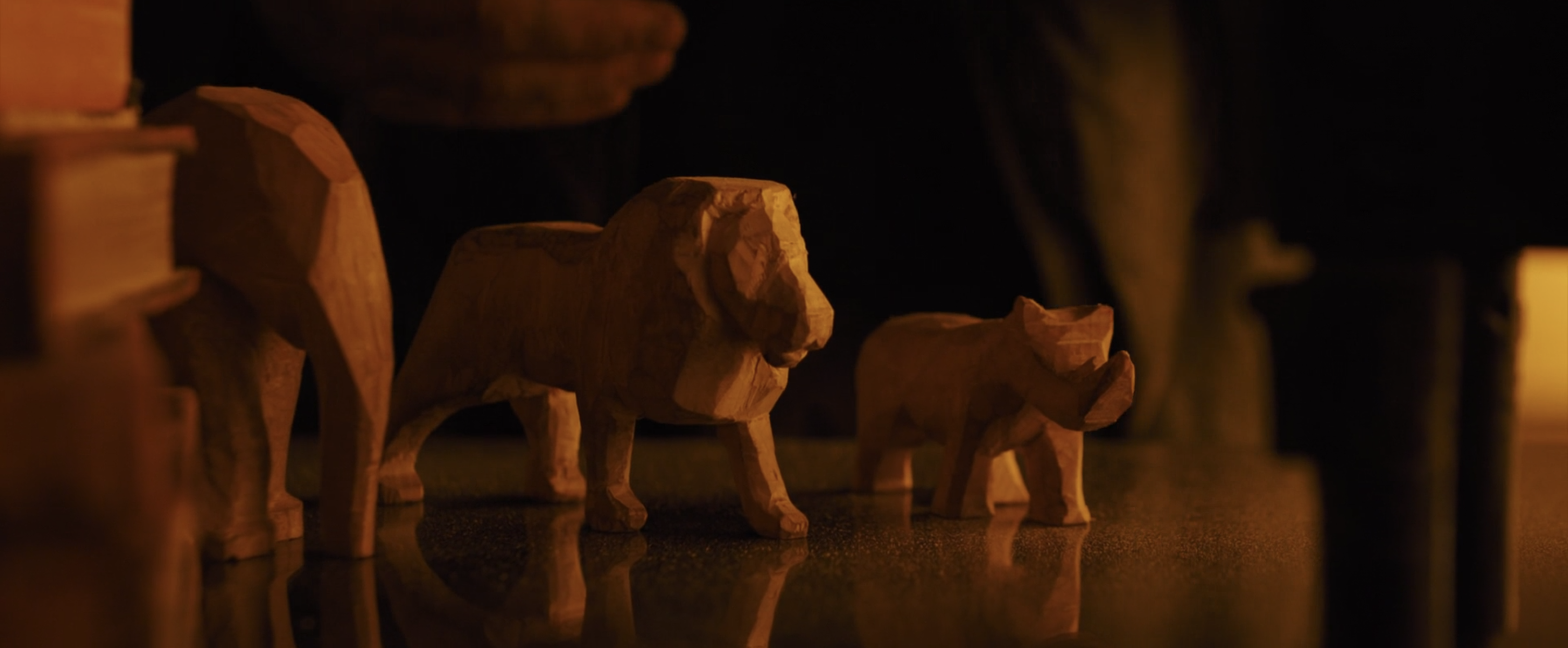
Reader Comments (8)
Lovely article. I didn't realize Canadian cities were known for their brutality. I can see Toronto fitting that description, as it's so cheerlessly imposing, but other Canadian cities I've been too haven't felt so stark.
I’m uncomfortable with the techno orientalism of the Blade Runner series. It’s beautiful though.
I watched this film last night and HATED it. And boy, do I hate seeing my favorite DP, Roger Deakins, wasting his talent on this kind of dreck.
Look, I was never a big fan of the orignal Blade Runner, not even back in 1982. Fantastic visual stylization, very influential, no doubt. But I always found the story confused in whatever it was trying to say about humanity, and Harrison Ford's atypically repressed under-performance a sleepwalk. If you avoid the question of whether or not he's a replicant, he's just another world-weary alcoholic ex-cop, period. Narration, no narration, unicorn dream, no unicorn dream, it doesn't make a difference, I think the film is absurdly overrated (like a lot of Ridley Scott's pictures).
This new film is longer, more pretentious, more downbeat, and even more confused about whatever it's supposed to be saying about humanity. Ryan Gosling's performance is even more underplayed than Ford's was - and having him unambiguously be a replicant himself is less interesting, not more. (And it's not that Gosling can't play a repressed character sympathetically, e.g., "Lars and the Real Girl".)
Okay, it's got good production design and visuals. But it's yet another sequel we didn't need that disappoints. Sorry, but I had to say it.
Total Recall (1990) shot in Mexico City utilizing the brutalism architecture.
The best thing about this movie beside the photography was the production design- now if they only had a better script and a good editor
Very insightful. Thanks for this.
This is why I'd rather BR2049 win for its production design than its effects (I'd really like War for the Planet of the Apes to get that) and cinematography (yes yes Roger Deakins etc, but the IMAX photography of Dunkirk was awe-inspiring and I'm not sure if Deakins' work was great cinematography or aiming his camera at great sets and visual effects).
What a thoughtful article.
While the first, great, Blade Runner movie had the thrill and flash of the Fall, this one has the daily grind and emptiness of the aftermath.
It made me think of what they say about people in the medieval era, at their melancholy and despair, surrounded by remnants of a greater past, with no idea of how to ever get there again.
For me, the movie wasn't long. It had a winter pace, long and melancholy. Yep, I can totally relate to that! I really felt for poor Ryan Gosling in his workplace. That's how wage slavery looks and feels like.
Your point about the tangibility is illuminating. I've seen the movie twice, and it's stayed with me. But it's carved out a little space inside me, like it's something I experienced, not just something I viewed. Is that the tangibility working?
When I read comments that say that there's no really great movies this year, I think of Blade Runner saying, "I'm just a movie, standing in front of a viewer ..."